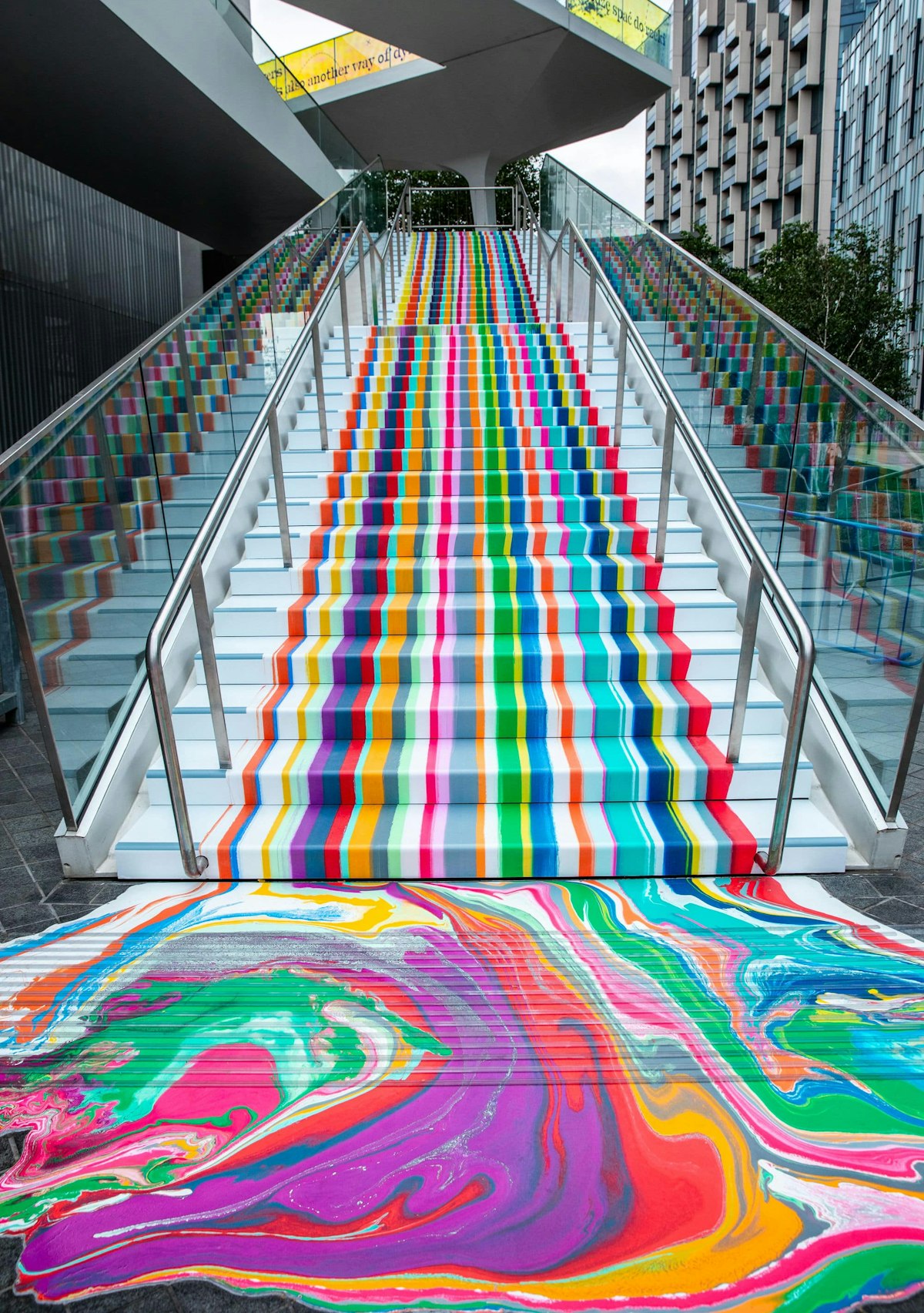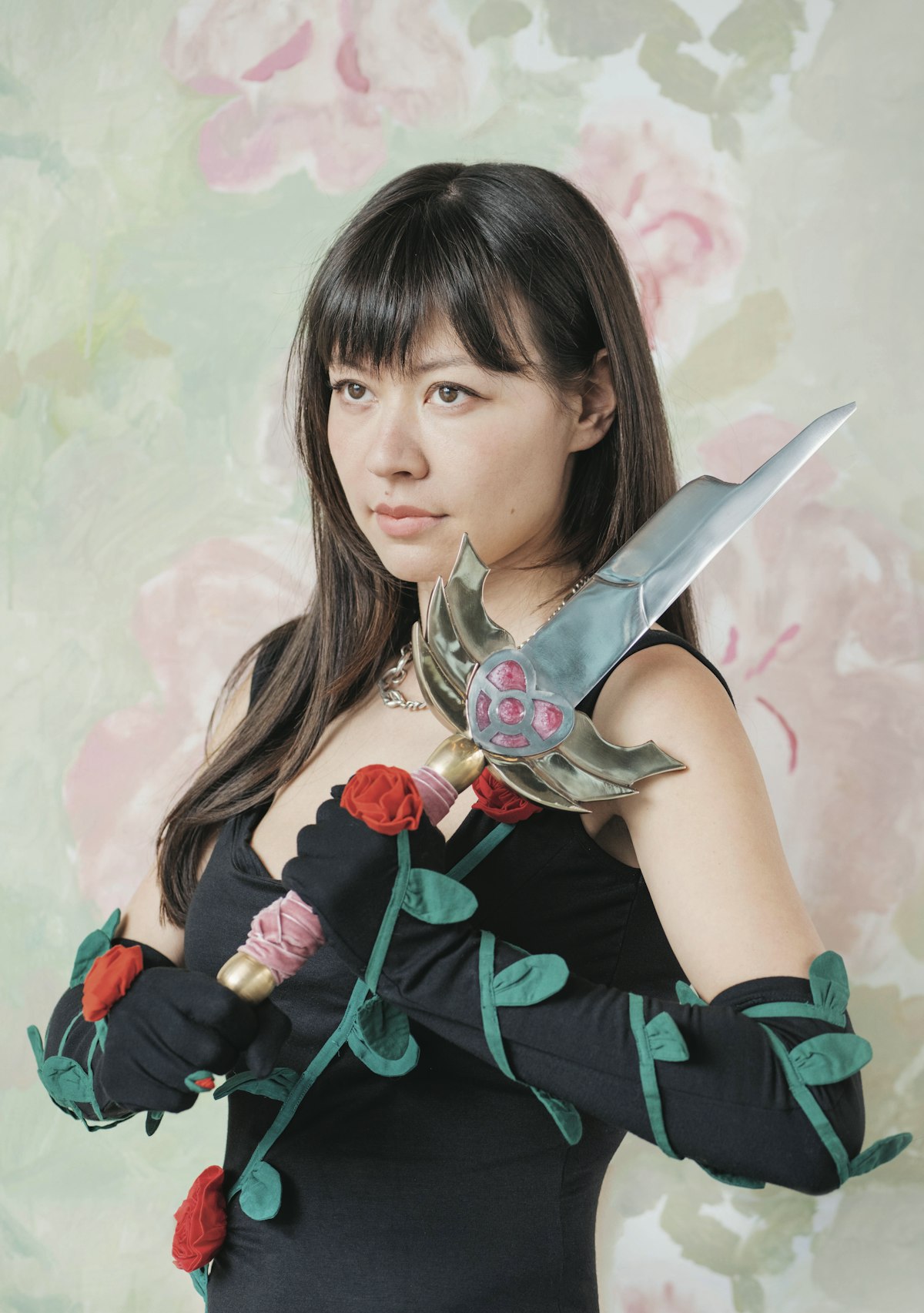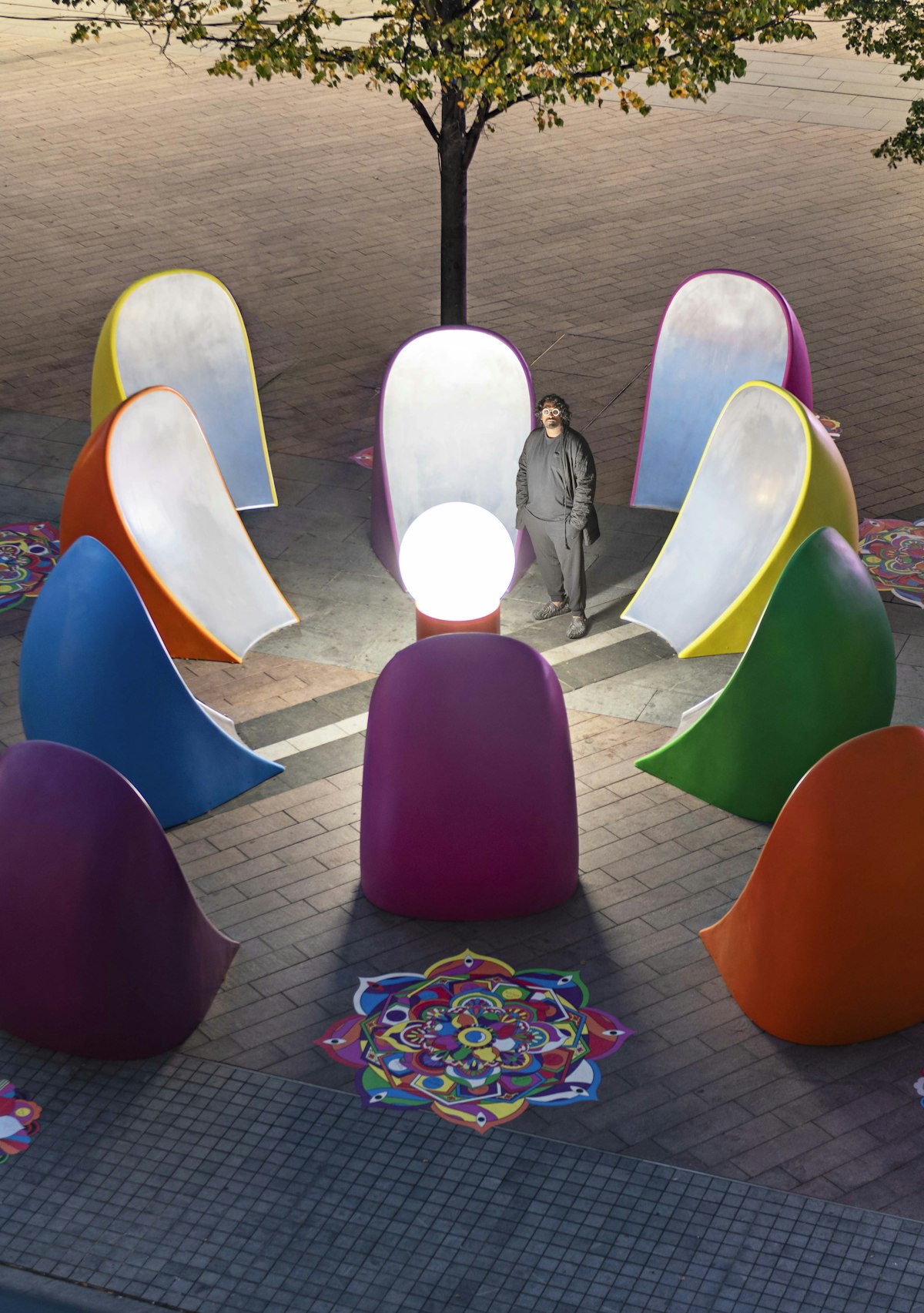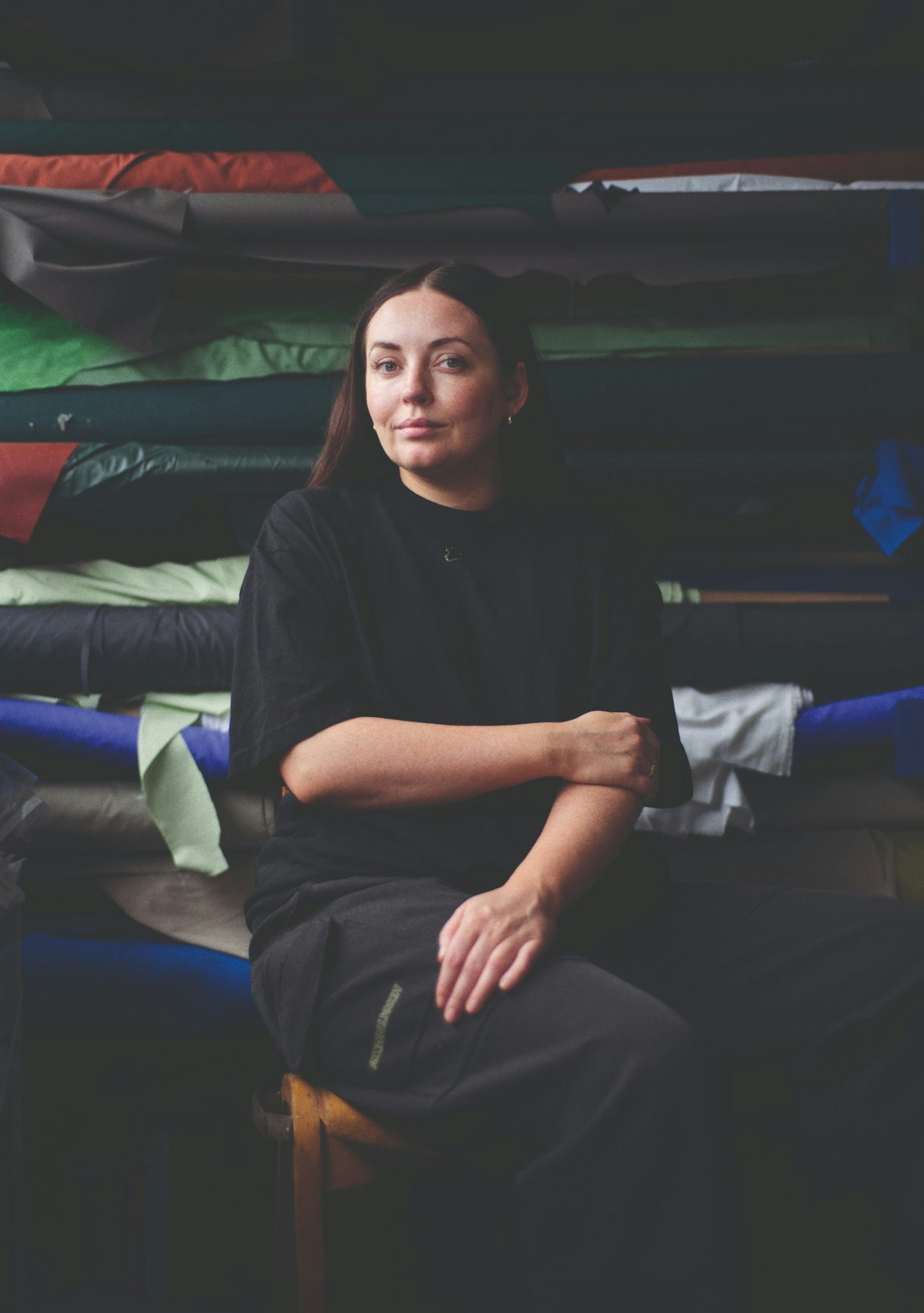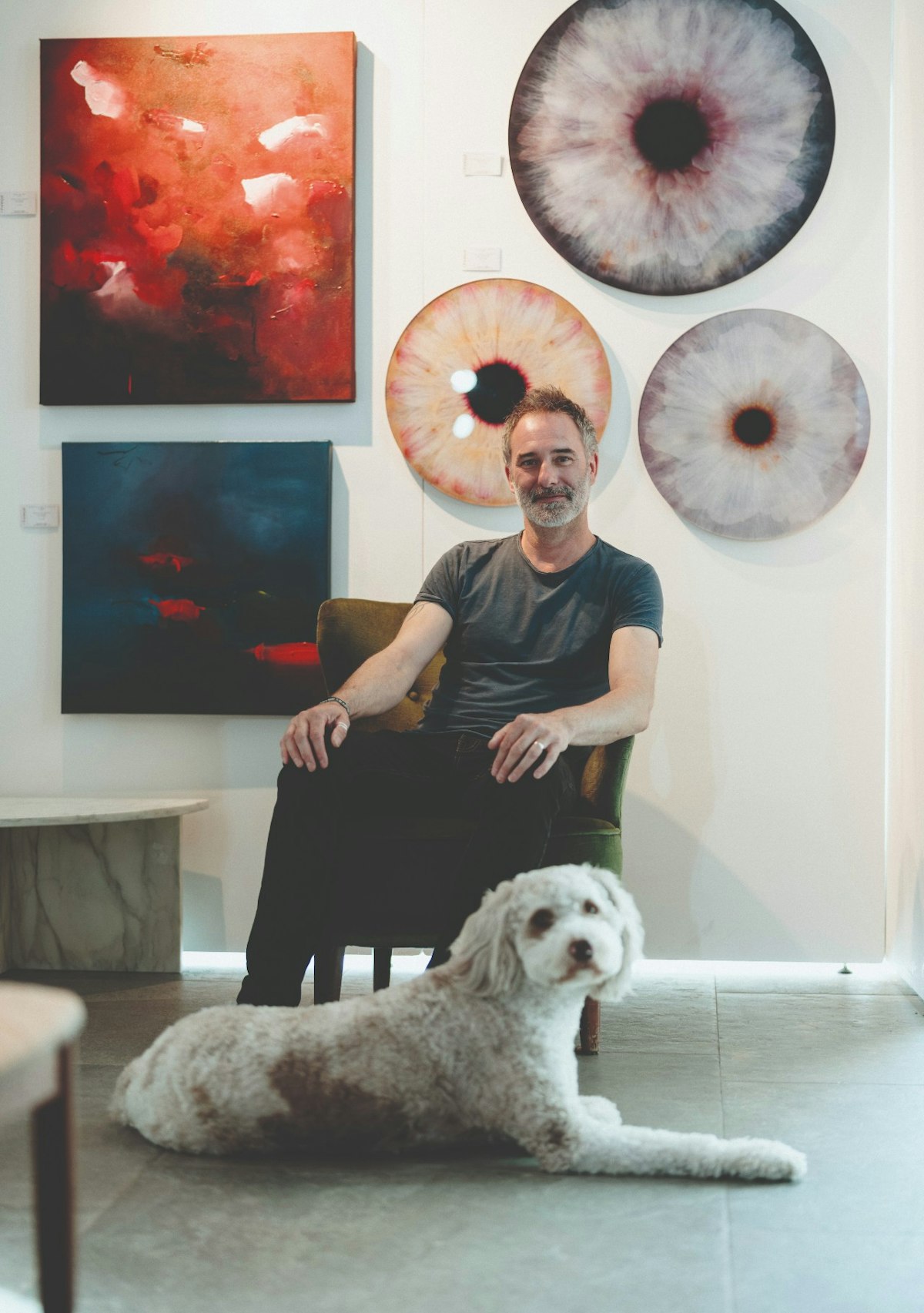
Moving Through It
Nothing is where you expect it to be in a Clod Ensemble performance: the audience might move into the position of the performer and eventually find themselves onstage; a choir of unaccompanied singers may emerge suddenly from total darkness to engulf a space in sound; or a performance might occur spontaneously at an unexpected time, in an unlikely place, like a group of identically-dressed women clad in red headscarves, shades and stilettos commandeering a taxi in central London. This concern with transposition – changing something from one position (or shape) to another – is central to how Clod Ensemble works, from the planning of their performances to every element of a production’s staging.
“Our process is very much about the dancers or the musicians we are working with,” says Clod Ensemble co-founder Suzy Willson, “bringing something of their own experience and their own movement language [to the performance], rather than just learning steps or playing notes. For some, that is quite an unusual way of working. I think that this personal investment and commitment helps an audience to find a way in [to the work]. Often, they can feel the movements they are watching in their body. People leave our shows and say: ‘That made me want to dance’.”
Willson doesn’t have a dance background herself. She studied Drama at Manchester University, learning from artists and teachers who were interested in making theatre with people in different settings such as in hospitals or prisons. Later she trained with legendary movement teacher Jacques Lecoq, examining the movement dynamics of nature, the body’s relationship to space, and how the ways we move impact on others. “I think that movement is an incredible medium, because it touches on all of the places — before or after words — where so much of our experience of life is expressed,” she says.
Clod Ensemble was co-founded by Willson and composer Paul Clark in the 1990s, and while they share an overarching vision of the work, in reality, says Willson, everything is a collective endeavour created with the whole Clod Ensemble team. Together, they create “provocative, finely-crafted performance and participation projects driven by movement and music,” a definition that sees dance as a physical and emotional response to music or personal feeling rather than an action rooted in instruction.
“"Our process is very much about the dancers or the musicians we are working with,” says Clod Ensemble co-founder Suzy Willson, “bringing something of their own experience and their own movement language [to the performance], rather than just learning steps or playing notes."”
Their approach to performance involves considering and embracing the full picture of how a production is staged. Each language — whether spoken, sung, played, performed through movement, or integral to the context, location, lighting, colour, material, text or images — is a vital tool for communicating to their audience, as well as a mode of learning and communicating among the ensemble. Clod Ensemble embraces difference and ambiguity, abstraction and atmosphere, but their work also encourages the audience to be active, critical participants in their performances; moving their bodies, engaging their brains, and interacting with performers, creating a balance of active engagement and letting go.
Silver Swan, which has been performed at Tate Modern’s Turbine Hall (2012), at the V&A (2002) and at McEwan Hall, Edinburgh (2005), features a choir of seven unaccompanied singers performing a score by Paul Clark, which weaves together two 17th century melodies. An Anatomie in Four Quarters (2019, 2013, 2016) is a promenade performance — where the audience changes its viewing position for each movement, until they find themselves on stage — about the human form, our desire to get close to things, and the “ways we attempt to see, define, contain, name and value our bodies”. Red Ladies (2005, 2006, 2008, 2014, 2015) “are a group of identically dressed women who transform, celebrate and disrupt the environment around them”. Responding to its location, the performance unfolds in two stages — a series of interventions in public spaces followed by a ‘theatrical demonstration’ within a theatre. The Red Ladies appear on rooftops, in museums, they commandeer cars, brass bands and helicopters.
This balance of performance, active listening and watching extends to their projects with schools, higher education institutions, NHS Trusts, and at their studio at Greenwich Peninsula. “The breadth of work that Clod does across learning, healthcare, and performance offers people a range of things they can draw upon in order to make their work,” says Willson. “And in terms of learning and talent development, that is what I am interested in; people feeling confident and skilled to be able to go out and make good stuff.”
Clod Ensemble’s Learning and Talent Development scheme features multiple strands of programming, including in-school workshops, bespoke training in music composition and physicality, and an initiative that teaches performing arts techniques to medical students and healthcare professionals. “There are loads of skills within theatre training or movement training — non-verbal communication, tone of voice, spatial awareness, being aware of different contexts, how you breathe — which become second nature, and are really good methods for medics, to help them be more aware of themselves, and to hopefully get more out of their job”, says Willson. “I think part of our creative learning process is about how artists become flexible enough that they can work in many different settings.”
“When I joined Clod, I had just decided to come back to music,” says artist Djenaba Davis-Eyo, who performs as Damsel Elysium. “They showed me this new world of performance art, which I didn't know was possible. It really fed my own creative practice.”
Davis-Eyo joined Clod Ensemble in 2021 as Music and Sound Creator, supported by the Weston Jerwood Creative Bursaries scheme. “My role was quite varied. I was learning on the job, supporting Suzy and Paul, and they mentored me, invited me to be part of their workshops and dance sessions, and supported me with equipment so I could make my own work.” Davis-Eyo makes experimental sound and visual art, composing pieces as a multi-instrumentalist, with a focus on performance, exploring alternative communication and connections with space and nature.
Having worked with Clod Ensemble as an associate artist, they have returned recently to teach on the Catalyser programme, which focuses on encouraging and enabling creative flexibility for early-career artists. Participants learn about everything from direction, composition, movement, architecture and visual arts, to fundraising, self-producing and self-promotion.
Davis-Eyo’s own workshop focused on the practicalities of making work as an interdisciplinary artist, taking in questions and ideas on mental health, burn-out, finances, and slowness as a rebellion against capitalism, as well as the technical aspects of practice. “We talked about labels, and how you define yourself. I wanted to encourage the abstraction, or dance of ‘I am this, this, and this… it’s kind of this, but kind of not’, allowing that to exist, and just sticking to the word 'artist’”, says Davis-Eyo. “When interacting with other artists in social settings, instead of saying, ‘What do you do?’, ask: ‘What do you enjoy doing?’ You learn a lot more about their craft that way.”
The final section of the workshop focused on inspiration and archiving, and the importance of preliminary materials to the success of a performance. “Looking at Clod’s work, you can see there's so much going on, and when I saw their archive, I understood that there is so much work in even one scene — documents, photos, drawings, and ideas”, says Davis-Eyo. “I have started to save all that, and publish it as a digital archive so that people can see every fragment of the work. ”
“By showing materials from our archive, rather than just looking at our work, participants could see how things start in a notebook [and grow],” says Willson. “It gives younger artists the confidence that they are developing their own creative practice, that their stories and experiences are ones that are worth telling.”
Since moving to Design District, Clod Ensemble has been able to expand its output and take on more ambitious and exciting projects than was previously possible. “One of the brilliant things about moving is it has allowed us to land a lot of our work and think about where we want our participation programmes to go”, says Willson. “It brings up new potentials. One of the things that it has really done is allowed us to be more spontaneous. We know that if me and Paul want to try something out one evening, we can go upstairs and have that conversation. If the studio is empty, we can invite some of the young artists to use it.”
Most importantly, it has allowed them to welcome new, open-ended collaborations. “There is a growing cultural community here. Everybody is doing different things, and there are a lot of interesting dialogues to be had”, says Willson. “Being at Design District offers space for chance encounters to happen, and I think chance encounters are a really important part of the creative process. It is something that we have lost over the last few years. They open up new spaces of creative possibility.”
